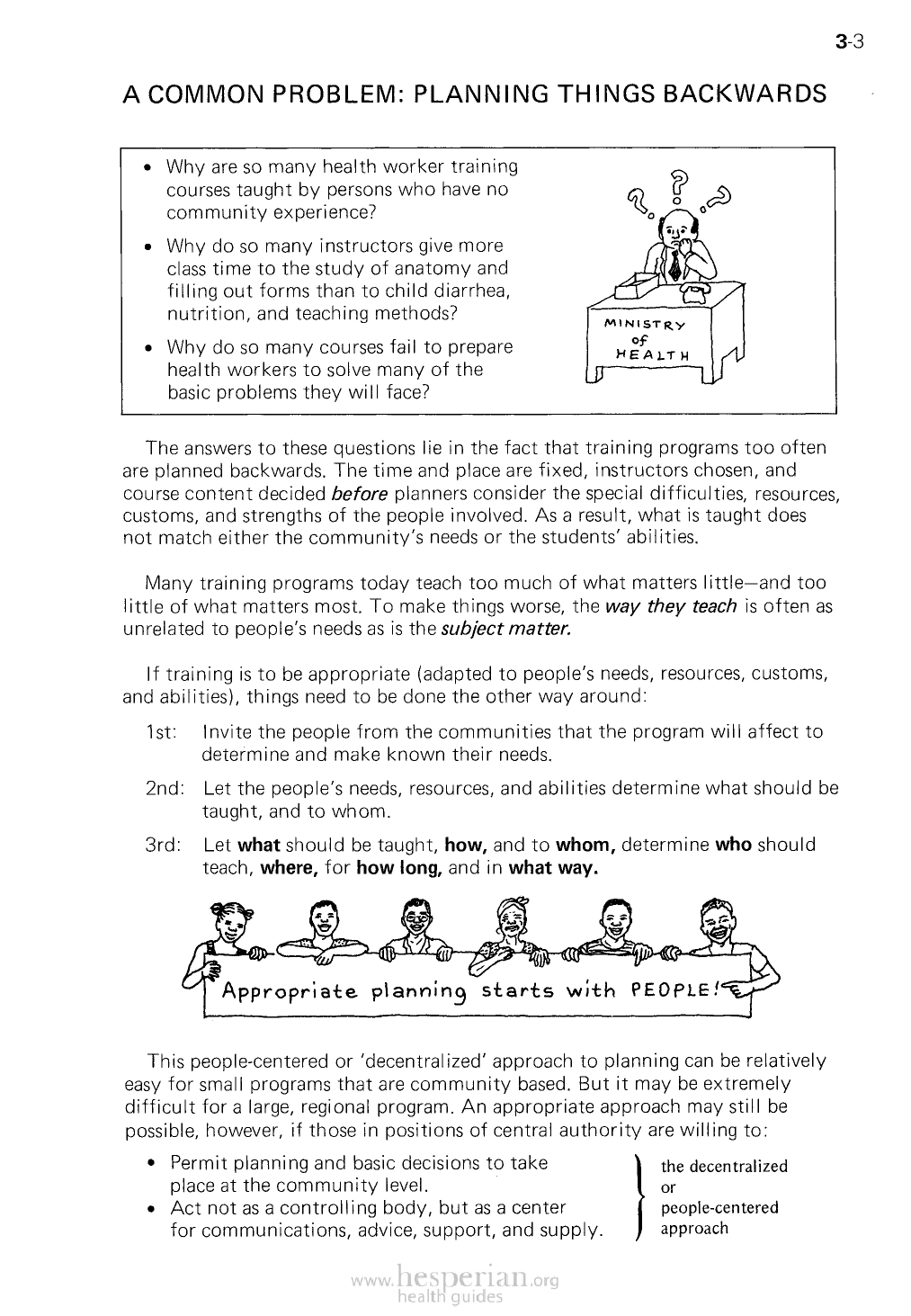
3-3
A COMMON PROBLEM: PLANNING THINGS BACKWARDS
• Why are so many health worker training
courses taught by persons who have no
community experience?
• Why do so many instructors give more
class time to the study of anatomy and
filling out forms than to child diarrhea,
nutrition, and teaching methods?
• Why do so many courses fail to prepare
health workers to solve many of the
basic problems they will face?
The answers to these questions lie in the fact that training programs too often
are planned backwards. The time and place are fixed, instructors chosen, and course
content decided before planners consider the special difficulties, resources, customs,
and strengths of the people involved. As a result, what is taught does not match either
the community’s needs or the students’ abilities.
Many training programs today teach too much of what matters little—and too
little of what matters most. To make things worse, the way they teach is often as
unrelated to people’s needs as is the subject matter.
If training is to be appropriate (adapted to people’s needs, resources, customs, and
abilities), things need to be done the other way around:
1st: Invite the people from the communities that the program will affect to
determine and make known their needs.
2nd: Let the people’s needs, resources, and abilities determine what should be
taught, and to whom.
3rd: Let what should be taught, how, and to whom, determine who should teach,
where, for how long, and in what way.
This people-centered or ‘decentralized’ approach to planning can be relatively easy
for small programs that are community based. But it may be extremely difficult for
a large, regional program. An appropriate approach may still be possible, however, if
those in positions of central authority are willing to:
• Permit planning and basic decisions lo take
place at the community level.
• Act not as a controlling body, but as a center for
communications, advice, support, and supply.
the decentralized
or
people-centered
approach